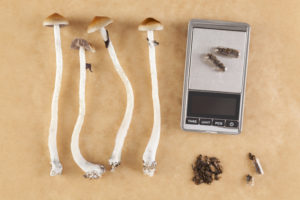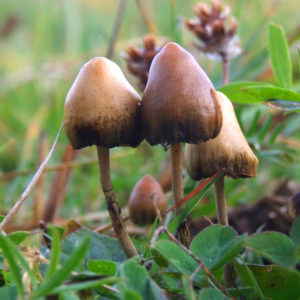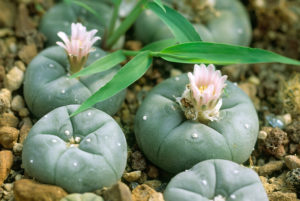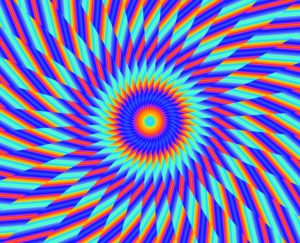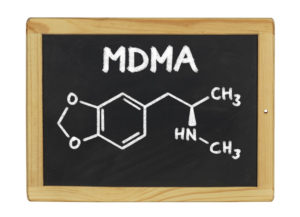Psychedelics are powerful psychoactive substances that alter perception and mood and affect numerous cognitive processes. They can cause thought and visual/auditory changes and induce an altered state of consciousness. They are generally considered physiologically safe and do not lead to dependence or addiction.
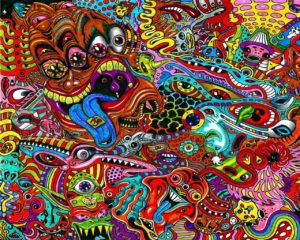
psychedelic imagery
Initially these molecules were called hallucinogens. But the researchers soon discover that they do so many other things (hallucinations are actually fairly uncommon) so a new name was sought and the name they settled upon was pshychedelics, which simply means “mind manifesting” – from Greek. Embraced in the 1960’s, the term carries a lot of countercultural baggage. In order to avoid these association with the hippies of the era, the demonstrations against the wars, the new sexual revolution and the refusal to be drafted by the young Americans, a new name is slowly emerging for these amazing substances: entheogens (from the Greek “the divine within”) in order to emphasize the spiritual/mystic/religious dimensions of these drugs.
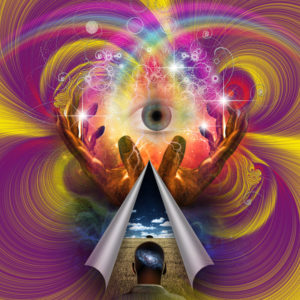
psychedelic abstract
And again, the psychedelics are far more frightening to people that they are dangerous. It is virtually imposible to die from an overdose of them and they are NOT addictive. After trying them once, animals will not seek a second dose and repeated use by people robs the drugs of their effect.
But what are the psychedelics? I will briefly explain here the top 4 most used.
- Psilocybin mushrooms – also called “Brown mushrooms”, or “Magical mushrooms”, or Shrooms”, which contain psylocibin, the alkaloid identified as the main psychoactive substance. Though they aren’t chemically addictive and they don’t represent a significant health threat, they are hard to distinguish from deadly mushrooms. Toxic species like Death Caps can look identical to some species of psilocybin and grow in the same places. So beware and leave the harvesting to specialists. When someone ingests psilocybin, it is metabolized in the body into a chemical called psilocin, which is similar in structure and action to serotonin. It has an especially high affinity for the 5-HT (serotonin) 2A subtype receptors throughout the body. Psilocybin is about 100 times less potent than LSD and 10 times less potent than mescaline.

psilocybin mushrooms and microdosing
A typical trip on a moderate dose of magic mushrooms (1-2.5g) includes increased intensity of emotional experiences, increased introspection and altered psychological functioning in the form of “hypnagogic experiences” — that is, a sort of transitory state between wakefulness and sleep. It is commonly described as a waking dream state, and brain imaging studies show that a mushroom trip is neurologically similar to dreaming.

Psilocybe semilanceata
- LSD (LySergic acid Diethylamide) – or “acid”. Popularized by the 1960s counterculture, LSD made its way into pop culture with public figures like the Beatles admitting to using it and becoming more creative because of it. LSD was derived from a fungus Clavices purpurea, or ergot. First synthesized by Swiss scientist Albert Hofmann in the 1930’s LSD played a paramount role in ushering the psychedelic revolution of the 1960’s and 70’s, which influenced millions to revolt against the status quo, and caused waves that are still rippling through our society today. It’s a potent psychedelic, known to shift perspectives, kill or “dissolve” egos, and sometimes completely change lives.
- Mescaline/Peyote – Mescaline, which is a substituted phenethylamine, is the primary psychoactive alkaloid in a range of psychedelic cacti, including Peyote (Lophophora williamsii), San Pedro (Echinopsis pachanoi), and Peruvian torch (Echinopsis peruviana)—all of which are native to the southwestern United States and northern Mexico. It can also be found in trace amounts in other regional plants, such as the Berlandier acacia (Senegalia berlandieri).

Peyote cacti
In its natural state, mescaline has been used for thousands of years in Native American religious ceremonies. It was also the first psychedelic to enter mainstream Western culture, predating the widespread use of LSD and psilocybin. More recently, the extracted compound has shown promise in the medical and psychotherapeutic treatment of substance abuse and depression among other conditions. The psychedelic effects of mescaline are likely due to its action on serotonin 2A receptors, and also has an affinity for the dopamine receptors, either as a selective reuptake inhibitor or as a dopamine receptor agonist. A 2005 study into the ceremonial use of peyote among Native American populations found there to be no detrimental long-term effects. For many, mescaline produces an experience of depersonalization or the dissolution of the ego; everything, including oneself, can therefore feel unified. Effects are generally felt within 45-90 minutes of consumption, peaking at two to four hours and lasting for up to eight. During this time, you are likely to see closed-eye visuals of colors and patterns, such as mosaics, arabesques, spirals, and so on transforming into visions of more definite objects like architecture, animals, and humans. At the same time, ordinary objects in your surroundings may appear more interesting, beautiful, and amazingly mystical—qualities that define the mescaline experience.

psychedelic spiral
- MDMA – or “Ecstasy”, or “Molly”- is a class of drugs that produce a feeling of communion or oneness with others. Unlike the rest of the top psychedelic drugs, MDMA is most often used as a party drug. MDMA’s effects, however, have a larger emphasis on increased empathy and emotional connection. It also elevates mood and sometimes facilitates a mental and physical euphoria. In some users, MDMA can create mild hallucinations like color changes or heightened audio effects. MDMA causes dehydration and raises your body temperature which means users are required to drink water consistently while high. In August 2017 the FDA granted MDMA “breakthrough therapy” status in the treatment of PTSD, meaning it may provide a substantial improvement over existing therapies.

Chemical structure of MDMA
The drug affects the brain by increasing the activity of neurotransmitters including serotonin, which helps regulate mood. It also increases levels of the neuro-hormone oxytocin, which scientists believe helps increase trust and reduce reactions to traumatic memories. Neuroscientists also think MDMA may reduce activity in the amygdala, the “fight-or-flight” response center of the brain, so people can confront traumatic memories—and talk through them in detail with a therapist—without feeling danger.
According to specialists in the psychotherapy and psychiatry fields, there is real therapeutic value for these substances in the field of mental health. Addiction, Depression, PTSD, hospice care for terminally ill patients are only a few of the potential use of these amazing mind-altering substances.

